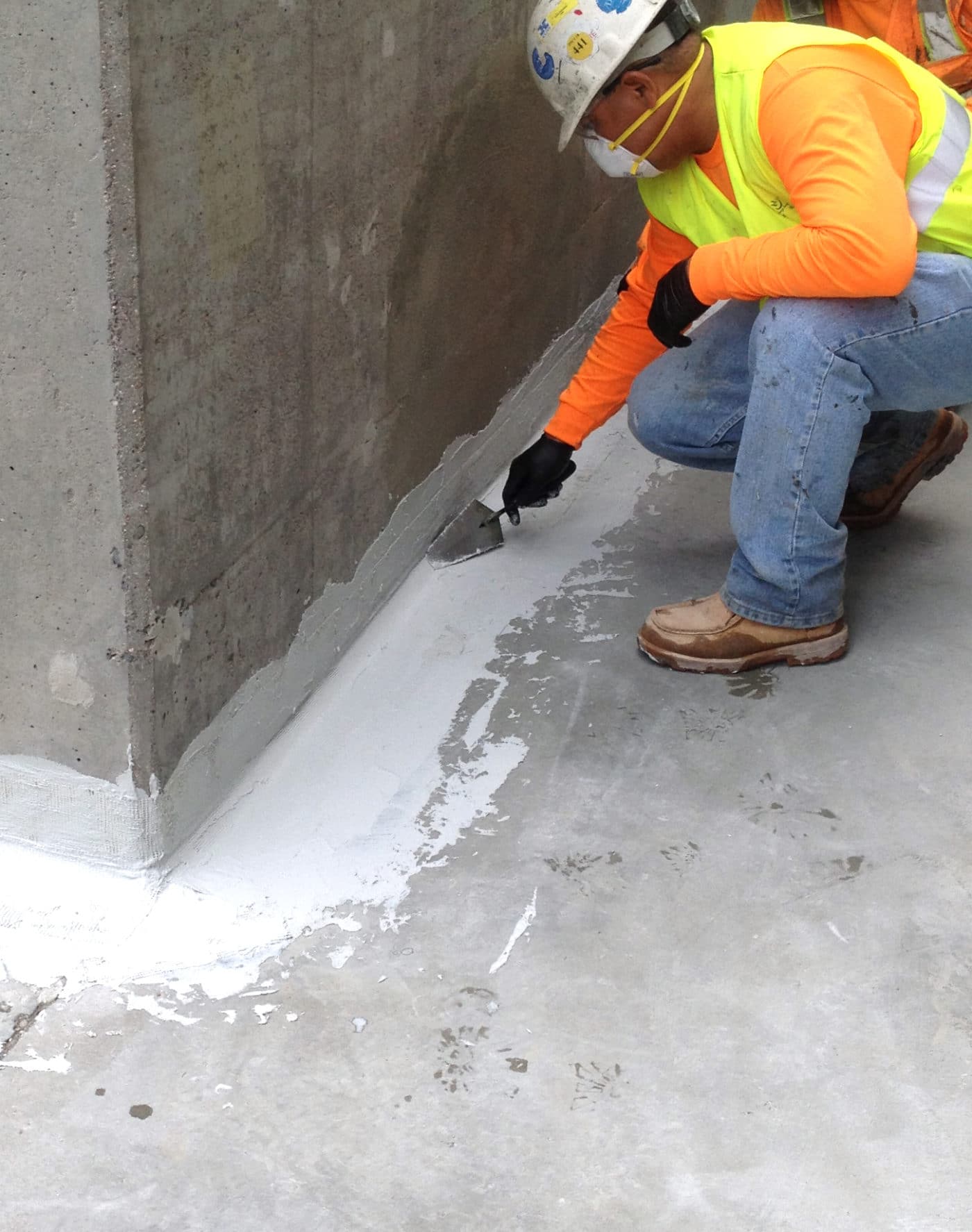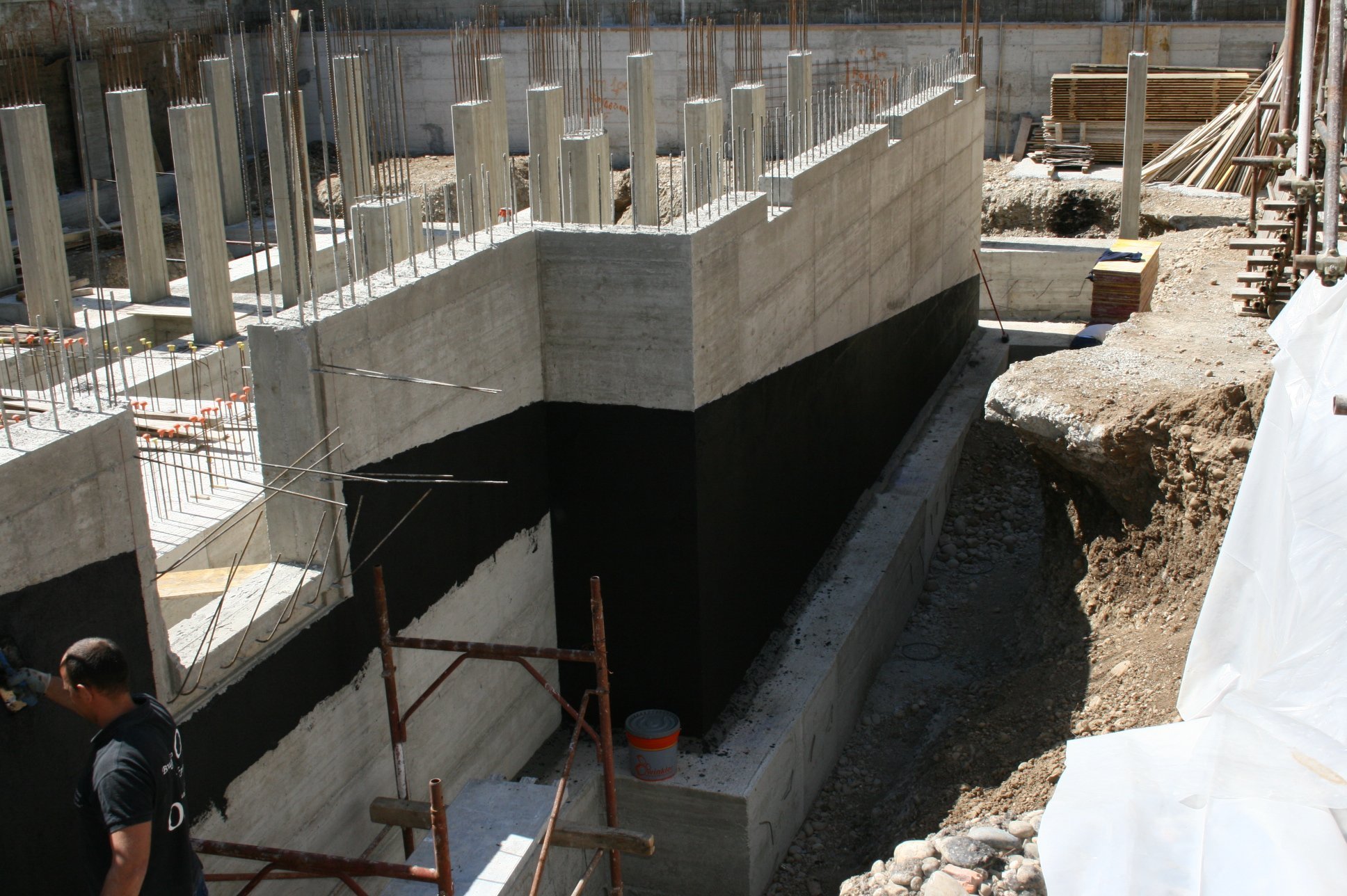Foundation waterproofing Omaha: The Long-Term Investment
Wiki Article
Sorts of Waterproofing: Exploring the Various Techniques and Their Applications
Waterproofing is an important element of building and upkeep. It secures frameworks from the detrimental impacts of water damages. There are a number of methods available, each with its one-of-a-kind applications and advantages. From membrane systems to cementitious remedies, recognizing these choices is vital for efficient implementation. The choice of waterproofing approach can substantially affect longevity and durability. Checking out these different methods reveals their distinctive benefits and prospective challenges, triggering further factor to consider of optimal solutions.Membrane Layer Waterproofing Systems
Membrane layer waterproofing systems serve as a vital barrier versus water intrusion in different structures. These systems commonly contain thin sheets made from products like rubber, polycarbonate, or bitumen, which are related to surface areas to protect against dampness infiltration. They can be set up over or below grade and are particularly reliable in areas vulnerable to high water exposure, such as basements, roof coverings, and foundations.The setup process involves cleaning the substrate, using adhesives or primers, and specifically fitting the membrane layer to guarantee total insurance coverage. Membrane systems can be either totally stuck, mechanically connected, or laid loose, relying on the specific demands of the job. They offer longevity and versatility, suiting structural activities without endangering their waterproofing capacities. In addition, these systems can be strengthened with additional layers for improved defense. Inevitably, membrane layer waterproofing systems are essential for protecting structures against water damage and keeping long-lasting stability.Liquid-Applied Waterproofing Coatings
Liquid-applied waterproofing layers provide a versatile solution for protecting surface areas from water seepage - Sump pump discharge drainage Omaha. These layers are composed of fluid materials that, when applied, create a smooth, adaptable membrane. Their adaptability allows for application on various substrates, consisting of concrete, steel, and timber. The finishings can be utilized in varied settings, from household to commercial settings, making them ideal for roofs, foundations, and below-grade structures.One significant benefit of liquid-applied layers is their ability to satisfy irregular forms and permeate cracks, producing a durable obstacle against dampness. They frequently show outstanding adhesion properties and resistance to UV radiation, making sure longevity and durability. Additionally, the application process is generally uncomplicated, enabling quick setup and lowered labor expenses. This approach likewise decreases the danger of water merging, as the continuous layer properly guides water away from prone areas. On the whole, liquid-applied waterproofing finishes are an efficient choice for comprehensive water defenseCementitious Waterproofing Solutions

Cementitious waterproofing remedies offer a durable choice for frameworks requiring trusted wetness defense. These systems mainly make use of a mix of cement, sand, and chemical additives to develop a waterproof barrier. They are frequently related to surface areas such as concrete wall surfaces, foundations, and floors, offering a durable, durable defense versus water intrusion.One of the key benefits of cementitious waterproofing is its ease of application; it can be applied utilizing a brush, roller, or spray, making it suitable for various job sizes. Furthermore, this approach is suitable with numerous surface areas and can often be utilized in combination with various other waterproofing techniques.Cementitious options are specifically efficient in atmospheres where water exposure is a concern, such as basements or below-grade structures. Their outstanding adhesion buildings guarantee that they bond well with substrates, offering a strong and impermeable layer versus moisture penetration.
Bentonite Waterproofing
Bentonite waterproofing is a very reliable method that utilizes sodium bentonite clay to create an all-natural obstacle against water. This method exploits the special properties of bentonite, which increases upon contact with water, sealing any potential leaks and protecting against moisture seepage. It is commonly made use of in various applications, consisting of structure walls, passages, and keeping wall surfaces, where water resistance more information is essential.Bentonite can be used see page in several kinds, such as panels or coverings, providing flexibility in installment. Its capacity to self-seal makes it an appealing choice for locations subject to moving dirt or ever-changing water degrees. Furthermore, bentonite waterproofing is ecologically friendly, as it is an all-natural material that does not introduce harmful chemicals right into the environments.Water Drainage and Exterior Waterproofing Systems
Efficient waterproofing usually includes a mix of methods, including drainage and exterior systems. Drain systems, such as French drains and sump pumps, are designed to reroute water far from structures, reducing hydrostatic stress versus foundations. These systems are vital in protecting against water buildup that can lead to structural damages and mold growth.External waterproofing, on the other hand, entails applying safety obstacles to the structure's exterior. Strategies such as the setup of waterproof membranes, coverings, or sealants can assist stop water seepage. This approach not just secures the structure but also enhances the general sturdiness of the structure.Together, drainage and outside waterproofing systems develop a thorough solution to manage water properly. By applying these methods, homeowner can guard their investments against the harmful results of moisture, guaranteeing lasting security and safety for their buildings.Regularly Asked Questions
Exactly how Do I Pick the Right Waterproofing Technique for My Task?
Choosing the appropriate waterproofing approach depends upon elements such as project kind, environmental problems, budget, and desired durability. Examining these aspects permits for notified choices tailored to certain needs and needs.
Can Waterproofing Be Applied in Winter Conditions?
Waterproofing can be applied in winter conditions, but it calls for certain materials and methods. Cold temperature levels may impact healing times and attachment, demanding cautious option of products made for low-temperature application.
What Are the Usual Indicators of Waterproofing Failure?
Common signs of waterproofing failing consist of noticeable water spots, peeling off paint, damp smells, mold growth, and fractures in walls or structures. Water Solutions. These indications suggest that dampness is permeating the barrier, jeopardizing its efficiencyFor How Long Does Waterproofing Last Prior To Needing Maintenance?
The longevity of waterproofing varies, generally lasting between 5 to 10 years. Aspects such as material top look at this now quality, environmental problems, and upkeep practices influence its durability, necessitating regular inspections to ensure efficient defense against water invasion.Exist Eco-Friendly Waterproofing Options Available?
The concern of environment-friendly waterproofing options exposes an expanding rate of interest in lasting products (Basement waterproofing Omaha). Various all-natural substances, such as plant-based sealers and recycled items, offer effective remedies while lessening environmental effect, attracting environmentally mindful consumersReport this wiki page